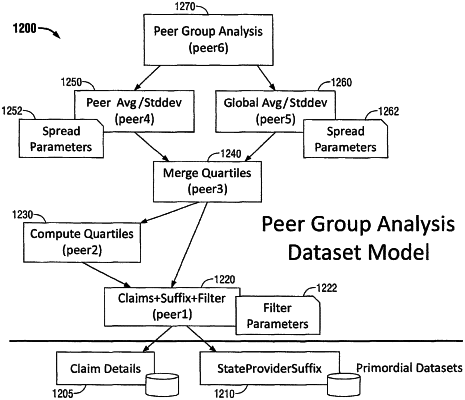| CPC G06F 16/283 (2019.01) [G06F 16/254 (2019.01)] | 22 Claims |

|
1. A hierarchical health care analytics system, comprising:
a computer system comprising at least one processor and a memory media;
persistent storage coupled to the computer system comprising a data store comprising:
one or more primordial datasets comprising dynamic health care data, including a first primordial dataset, where a primordial dataset is a dataset without parents, and
a hierarchy of dataset models corresponding to one or more ordered sequences of health care data analytics, including a first dataset model, wherein each of the dataset models comprises a command and a data description, each dataset model has at least one parent, each dataset model descends directly or indirectly from at least one primordial dataset, and the first dataset model descends directly or indirectly from the first primordial dataset; and
instructions which when loaded into the memory media and executed by the processor cause the computer system to perform:
instantiating and storing in the data store a first instance of the first dataset model and displaying, on a display device operatively coupled to the computer system, a first analytical result based on the first instance of the first dataset model, said first analytical result pertaining to an ongoing investigation of the dynamic health care data;
recognizing a data change in the first primordial dataset;
in response to said data change in the first primordial dataset, automatically invalidating each instance of a dataset model that descends directly or indirectly from the first primordial dataset and instantiating a new instance of the first dataset model, wherein responding to the data change in the first primordial dataset further comprises preserving reproducibility of an analytical result based on an invalidated instance of a dataset model, and wherein invalidating an instance of a dataset model comprises flagging the instance of the dataset model as invalid; and
automatically displaying on the display device a new analytical result based on the new instance of the first dataset model, said new analytical result pertaining to the ongoing investigation of the dynamic health care data.
|